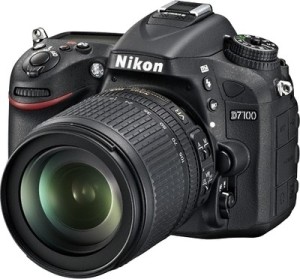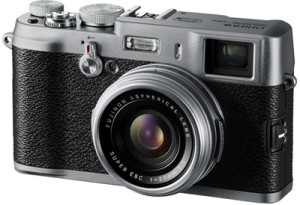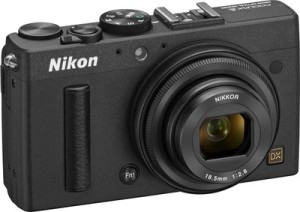As a photographer, the single most common question I get is “So, which camera do i buy“. Or: “I really love your photography – which camera do you use?”. Or, “Is Nikon better than Canon?”. I’ve been asked this question so many times, and by so many people — the idea of writing a post about is seems rather obvious, but after a lot of delay — here it is! This guide is a small attempt at being able to answer these questions once and for all, and to be able to document my answer — which I must say has evolved over the years into this one! I’m going to keep making updates to this post so that I keep it as relevant as possible.
In this post:
- Go through some of the things that you should think about while buying a camera
- Jump straight ahead to my recommendations
First things first
The answer to “which camera should I buy” can’t be answered easily. It’s one of those existential questions, like the one about what is the meaning of life (!) — and needs a bit of background and supporting information before we can even begin to answer it. A camera is a tool — a tool you use to make great photographs and preserve memories. Like any tool, you need to know what you hope to achieve with that tool before you go out and buy it. So before we get into this guide, let’s assume that this is more of a journey of discovery rather than a guide and plain vanilla list of recommendations (though there’s that too at the end). It’s a journey where you ask yourself what you want to achieve with your camera, rather than how much you can afford.
Step 1: Answer this — what do I want to do with my camera?
There are quite a few possible answers to that question. Let’s try some of them.
- I want something convenient that I can use for casual pictures and things that catch my fancy. Maybe post to Instagram.
- I only have time to take pictures when I go on a holiday — and I want to be able to take fancy pictures of my vacation.
- I want to learn photography — and want manual control over my camera
- Everything else is secondary, I want something light that can fit into my purse/bag/backpack
- I want to do commercial assignments one day, and I want to buy a serious camera
- Money is no concern, I want the BEST camera out there!
Everything needs purpose — and deciding on a camera to buy is based on what you want to do with it. Once you have a fair idea, it’s time to decide whether you want a point-and-shoot camera or a larger, heavier more professional-looking DSLR.
Step 2: Realise that megapixels are a myth
[quote author=”Arjun Kartha” content=”Megapixels are a myth. Really. “]

Shot on a ten year old Nikon D70s — a 6 mega-pixel DSLR. In 2001, this was one of the best cameras you could dream of owning.
There — I said it. Megapixels are a myth. The idea that every camera store sales clerk drums into your head again and again, that more megapixels make you a better photographer is absolute poppycock. Any camera above 5 megapixels will give you the same results, for most applications. I’m not going into technical details here, but you’ll have to trust me on this one. There are a whole host of other factors that determine the quality of a photograph. Megapixels are only a statistic of how many pixels are packed into a photograph, and that depends hugely on how many of those pixels are packed into a square inch. Unless you’re planning on enlarging your pictures billboard-size, ANYTHING above 5 megapixels will give you broadly the same results. Having said that, let’s move on to Step 3.
Step 3: Deciding between a point-and-shoot (PS) and a DSLR
I’ve known many people to scoff at point-and-shoot cameras because they weren’t ‘serious’ enough. Heck, I used to be one of those people! The general consensus always was that point-and-shoot cameras are only a little better than mobile-phone cameras, and were a rather serious waste of money. Well, this is still true — but only to an extent. The entry-level point-and-shoot cameras (under INR 6k / $100) are barely any better than the camera you have on your smartphone. An iPhone 5 camera can take better photos under daylight than entry-level Nikon CoolPix and Canon PowerShot cameras. However, once you go a little deeper into it, you’ll see that more advanced cameras (in the range of INR 20-30k = $400-500) pack some serious power. For instance, Nikon’s P7000 (or even Nikon P6000) offers some serious goodies for a relatively cheaper price tag than a DSLR. You get a full HD video recording, shoot in RAW format (for custom edits later), and can shoot in full manual.
| P&S | DSLR |
Pros:
Cons:
|
Pros:
Cons:
|
Step 4: Now choose.
You’ve gone through the pre-requsities. Chances are, you’re already swinging one way or the other. Before I recommend which cameras I think are the best out there, here’s some advice on how to choose:
| Buy a point and shoot if you said: | Buy a D-SLR if you said: |
|
|
That’s it! Your decision is ready! You’ll note that there’s ONLY one reason why you should buy a DSLR. It’s sad, but I know of a lot of people who bought a DSLR and never take it out of their cupboard. DSLRs need commitment. You need to get used to packing an extra bag for every holiday. You need to remember that you need to sink in extra money on lenses. And don’t even get me started on full-frame and crop-sensor lenses! That’s for another blog post! 🙂
So at the end of the day, consider your decision seriously. It’s not a casual investment — a good camera if the chosen right can give you years of good service. There’s absolutely no need to fall prey to camera company hype and upgrade your camera every two years. It’s not a washing machine — once you buy it, it should be yours for life. Or at least a very long time! (As I write this, my 2001-era Nikon D70s still works fine. It’s 13 years old, has been with me to the mountains of Ladakh and to the beaches of South India, and still serves me faithfully).
My Purchase Recommendations:
A lot of people look to skip through the chase and go straight to the recommendation. Hey, I’m one of them! Here are a few cameras that I think are really good at what they do, and should be worth your money. Note that these are NOT sponsored plugs, and I earn no money whatsoever from the camera companies should you decide to buy one of these based on my recommendations. There are MANY cameras out there, and I haven’t had a chance to review all of them: the ones on this list are ones I’d buy for myself:
DSLR PURCHASE RECOMMENDATIONS
(I’m assuming here that you’re buying a DSLR to learn photography. This article doesn’t cover pro cameras — if you’re a pro, you shouldn’t be reading this guide for a purchase decision).
 Nikon D7100 (or the D7000)
Nikon D7100 (or the D7000)
I still use this camera as my backup camera. DX format, excellent fast autofocus system, full manual control (obviously!), HD movie recording and all the bells and whistles you’d expect from a DSLR. All Nikon lenses ever made will work perfectly (thanks to the built-in focus motor)
 Nikon D5200 (or D5100)
Nikon D5200 (or D5100)
If you’re on a tighter budget, this is what I would recommend entering into digital photography with. With all the knobs and dials you’d expect from a digital camera, this camera is very similar to the D7100, with the notable exception of the built in focus motor.
SERIOUS COMPACT POINT AND SHOOT CAMERAS:
I’m starting the list with a really expensive point and shoot camera. However, with brilliant low-light performance and classic retro looks, this is for the photographer for whom the cost is not a constraint.

Camera companies love to confuse us with strange product codes. Any of the cameras in the ‘G’ series will not disappoint the serious photographer. Excellent in low-light (with a f1.8 aperture), this camera will help you extend your photography prowess the way you want it to.
With the same sensor as the Nikon D7000 DSLR, this camera will give you full manual control, excellent detail and everything you need to get creative.
AFFORDABLE POINT AND SHOOT CAMERAS:
Your mobile phone is the most affordable point-and-shoot camera you can get. If you’re looking for a camera below INR 15k (US $400), my serious advice would be to invest in an iPhone 5. In addition to all the wonderful things that an iPhone can do for you, it also has a brilliant camera that far surpasses the entry level cameras that are avaiailable in the market today. Still not convinced? Honestly, there’s no real advice I can give you except go to a large camera store, and find out which model has the best deal going on at the moment. They’re all pretty much the same, with comparable features and price points. This is the most aggressively fought segment there is, and all manufacturers try and woo customers in with discounts, deals and features. Ask the store clerk for a recommendation, and see which model looks and feels right for you.
FINAL WORDS
I hope that this made the decision making process a little easier. There are a lot of good cameras out there, and most of the time it’s hard to go wrong. However, I understand how complex the decision making process can be, and you don’t want to wind up with something that you regret!
There are quite a few questions that remain unanswered — that I’m going to save for a future post. Some of them are:
- How to choose between a full-frame and crop-sensor (DX) DSLR
- How to choose between a Nikon and a Canon (and other brands)
- How to choose DSLR lenses, and my lens recommendations
Questions? Comments? Leave a note in the box down below and I’ll be glad to answer!
About Arjun Kartha Photography
Arjun Kartha is a ‘non-wedding’ Indian Wedding Photographer with a candid, contemporary and off-beat approach to shooting Indian marriages. With years of rich experience, Arjun is one of the finest and most sought after wedding photographers in India. Working as a husband-wife team, Arjun and Praerna are candid wedding photography specialists – and veterans of the fledgling wedding photography genre in India. With a penchant for making “fun” photos, they love creating behind the scenes memories that will last a lifetime. Arjun is also a category winner of the prestigious Kodak Wedding Photographer of the Year 2011 award.





Add a Comment